Life Force
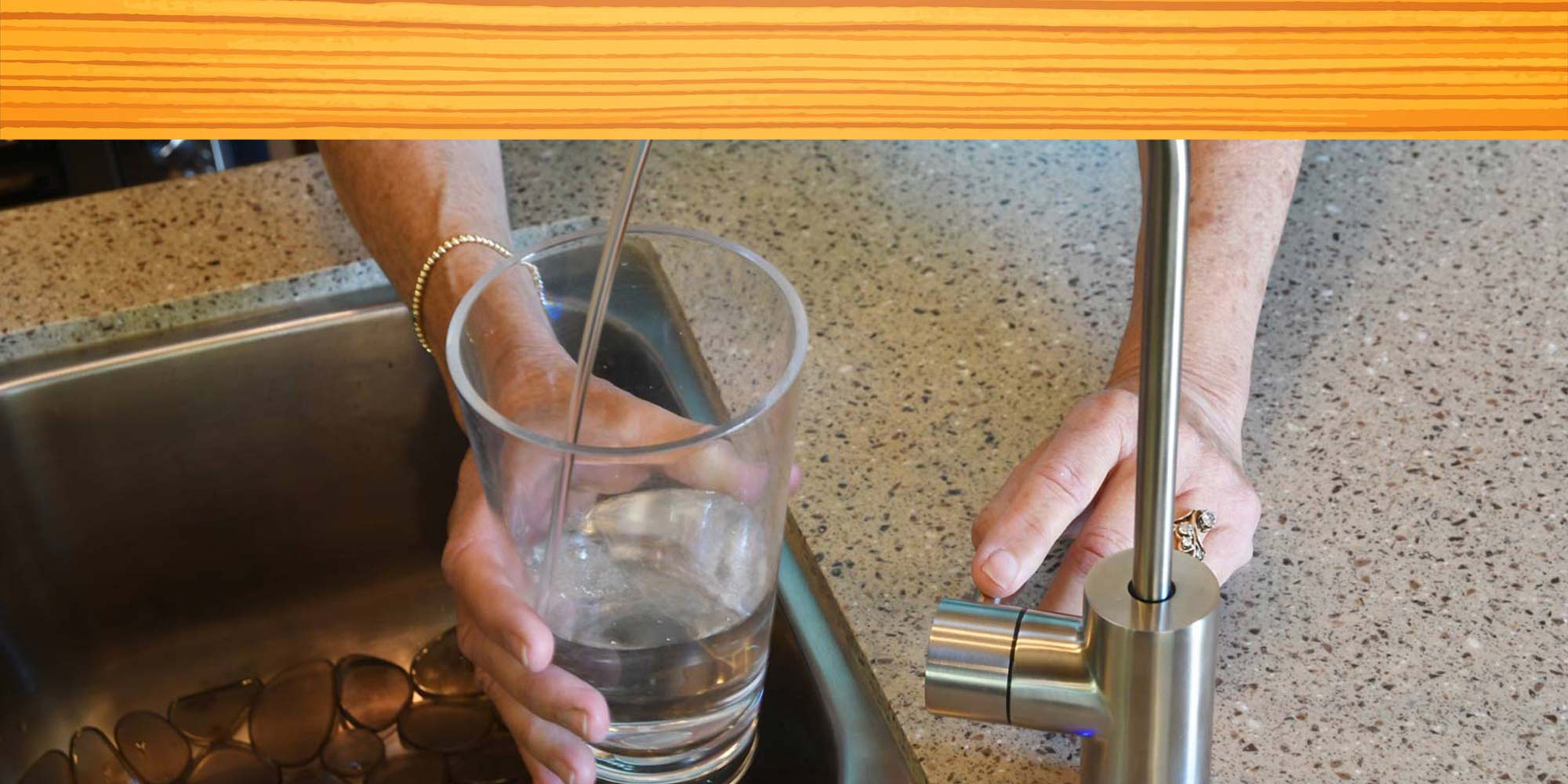
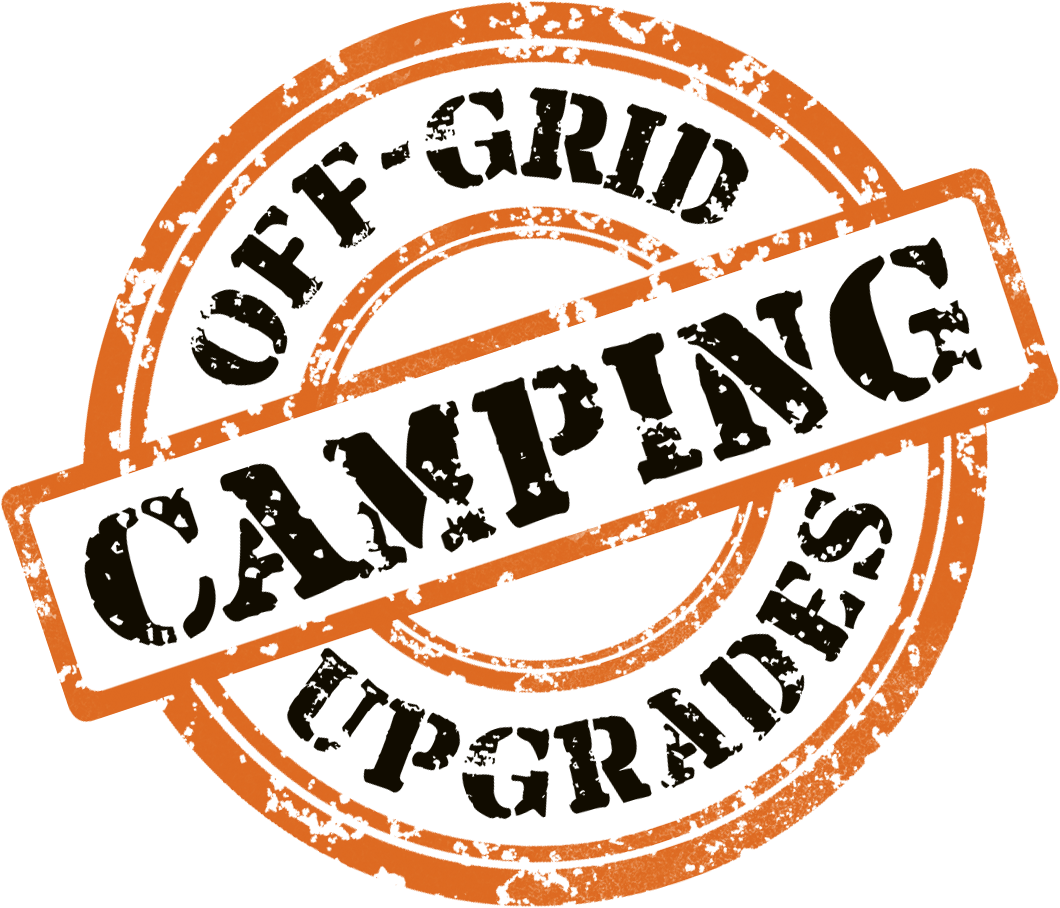
How much do you know about the drinking water where you live? Odds are, you know enough to purchase bottled water, a filter pitcher, or some other solution to protect yourself and family from the nasties that can sometimes be present in a municipal water system. But what about when you travel by RV? Once you arrive at your destination, you may have no knowledge of the water quality in your area, where it comes from or how it has been treated. That’s probably fine for showers and washing dishes, but there’snary an RVer who will drink water right out of the tap — unless they treat it themselves before it enters through the city water inlet or before filling the storage tank.
Water filtration systems are definitely a step in the right direction, as many can filter out particles one micron (about 70 times smaller than a human hair) or smaller, reduce harmful contaminants like chlorine and lead, and improve the overall taste and smell. What they don’t do is remove or kill harmful pathogens like bacteria, viruses and parasites that can cause illness.
While all water suppliers in the U.S. are required to uphold certain levels of water quality — which theoretically make tap water safe to drink — violations are still alarmingly common. According to a 2017 report by the Natural Resources Defense Council (NRDC), nearly 77 million Americans got water from systems that violated federal protections in 2015. More than a third of this number relied on systems that did not comply with standards put in place to protect public health. For RVers, these concerns may be compounded by a poorly maintained local water supply at an RV park or campground, and/or a spigot that may not be sanitary. With all this in mind, a system that both filters and purifies the water entering your RV would be a smart investment.
John Sztykiel (“stee kee ill”), former CEO of Spartan Motors (manufacturers of RV and commercial chassis) is obsessed with clean water — and with good reason. When he arrived in Ethiopia about 13 years ago to adopt his daughter, Ana Grace, he was appalled to learn that residents of the country had very limited access to clean, safe drinking water. Retiring from Spartan after 30 years of service, he and his wife, Joni, made it a mission to develop a water purification system that could solve the world’s water problems. That’s a pretty lofty goal by anyone’s measure, but Sztykiel and his company, No Dirty Earth, has been working on developing high-quality water filtration systems under the No Dirty Water (NDW) brand. NDW’s philosophy is to keep water filtration inexpensive and accessible for everyone, while giving its customers the best possible product. “Anything in a mobile environment, it has to be built to last,” said Sztykiel. “But in addition to that, we want people to be able to repair the system themselves, using as many standard parts as possible. Our systems use standard plumbing pieces — you can find replacement parts at the local hardware store.”
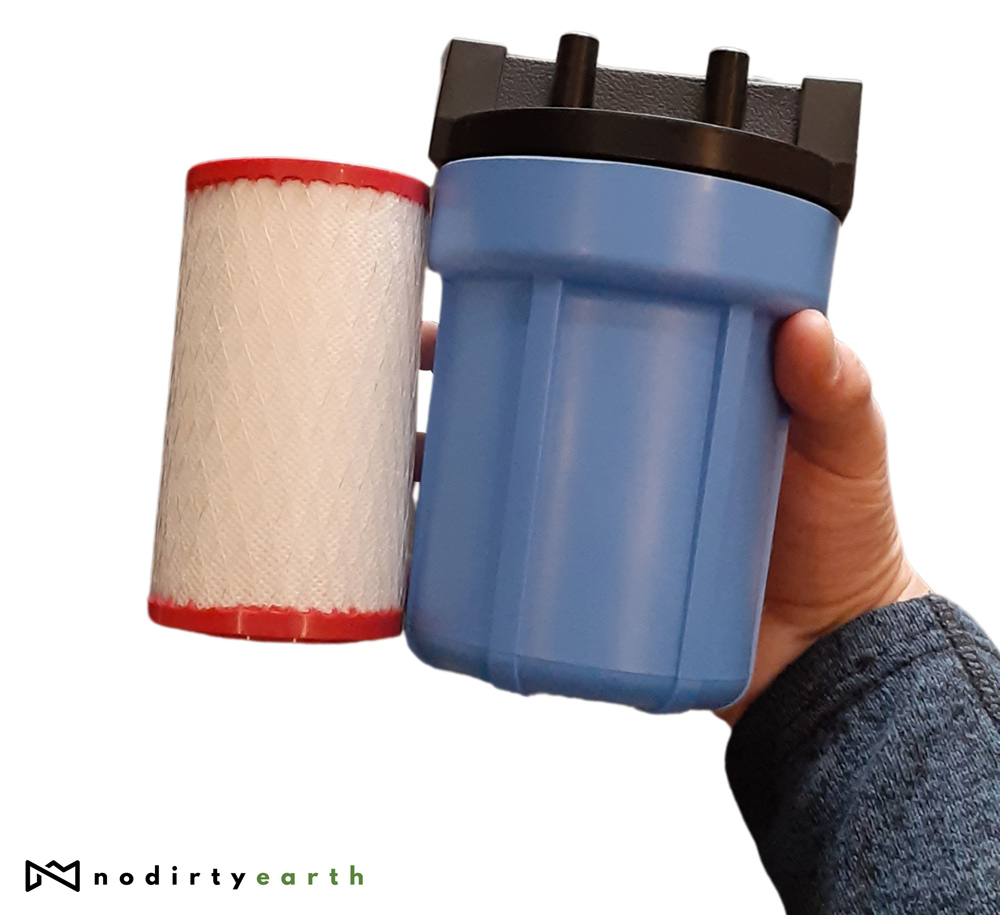
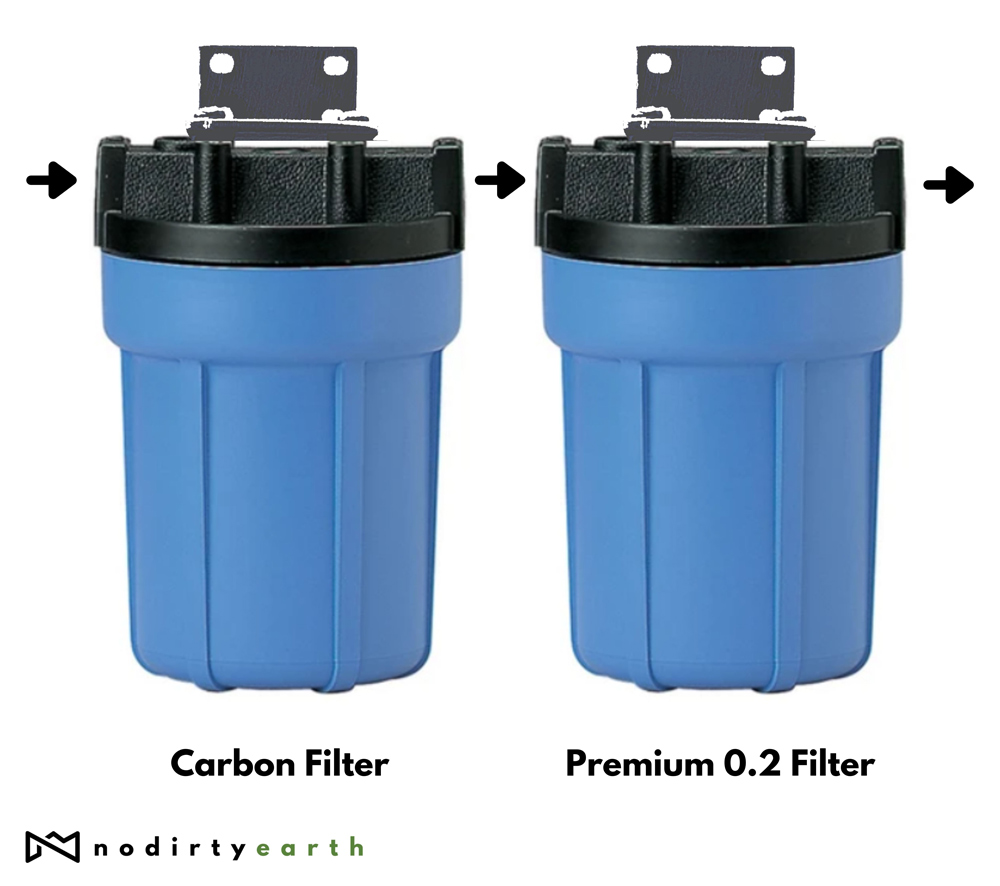
Of particular interest to those who frequently enjoy off-grid camping, No Dirty Earth is planning on releasing its Rugged Water system in May that will incorporate a 12-volt DC-powered pump as well as two filters in a tough, portable housing.
“Rugged Water allows off-grid campers to have access to clean drinking water anytime, anywhere,” said Pierce Fitzpatrick, co-owner of No Dirty Earth. “The 12-volt pump will allow the user to draw from any public or outdoor water source, filter it, then collect it in a container and use it as is.” Because the Rugged Water system will likely be used somewhat infrequently and stored the rest of the time, it will come with the same carbon pre-filter as used in the Duo system, plus the company’s brand new Premium Plus 0.2 filter, which incorporates an antimicrobial element to prevent bacteria growth. The new filter will also be available for use in the Solo and Duo systems.
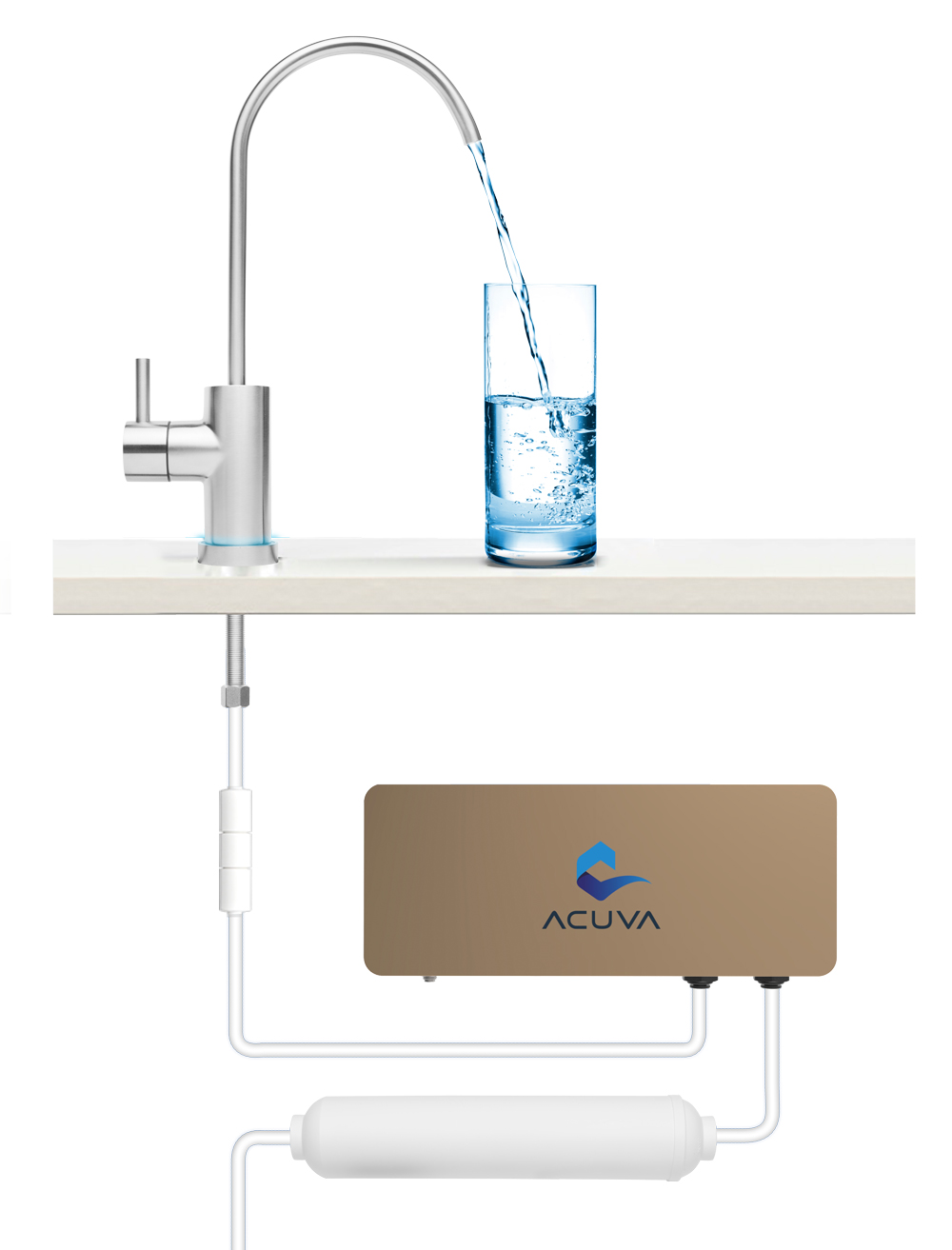
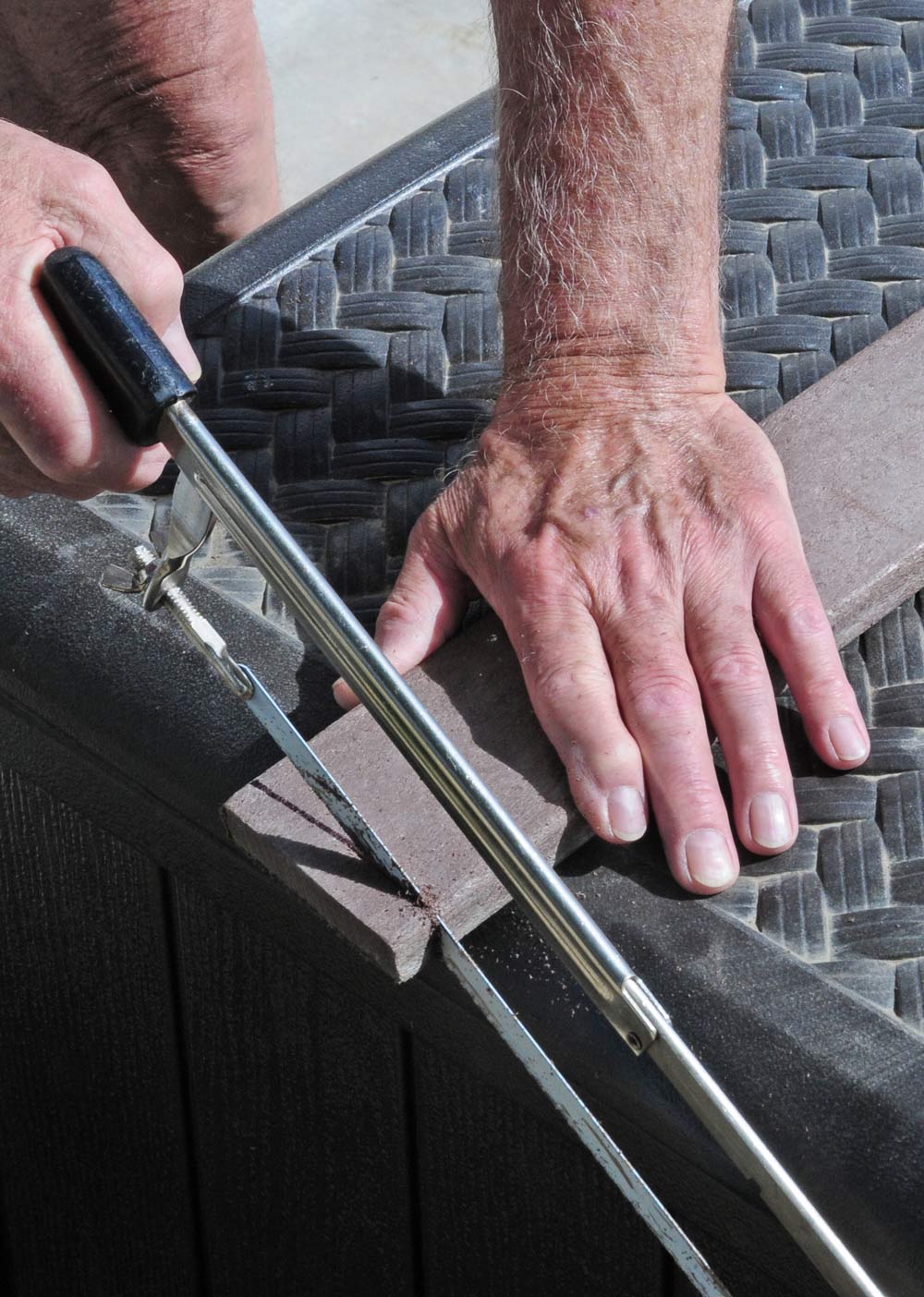
Filtration vs. Purification
As mentioned earlier, water filters catch small particles — but a purification system kills bacteria, viruses and other pathogens. The two most common purification methods include ozone and LED UV light treatments, both of which are generally claimed to be up to 99.99% effective at removing bacteria, viruses and cysts like cryptosporidium and giardia. Ozone treatments work by oxidizing the organic material in bacterial membranes, which weakens the cell wall and leads to cell rupture, causing immediate death of the cell. As an oxidizing agent, ozone is stronger than chlorine and has a kill rate that is more than three times faster — but as of this writing, ozone purification systems aren’t terribly practical for an RV application. They are installed asa point of entry treatment system — in other words, where the water would enter your RV at city water hookup.
The trouble is (for now, at least), the flow rate required to properly ozonate the water isn’t compatible with the plumbing system of an RV. The benefit of an ozone water-treatment system is an RV application (and there are some that are under development as you read this) will be that, once the ozonated water is introduced to the RV’s plumbing, it will disinfect everything it comes in contact with — the plumbing, the freshwater holding tank, every tap in the RV.
A simpler, more practical way to purify your drinking water in an RV is with an LED UV light system. As water passes through a UV water treatment system, living organisms are exposed to UV light of a specific wavelength that disrupts their DNA, making it impossible for the little critters to function and/or reproduce. UV light purification systems install inside the RV and treat the water before it exits the faucet and goes into your glass. The only caveat with an LED UV light system (and it’s a small one) is that the water must be filtered beforehand, or the UV light may not be able to penetrate the water sufficiently for adequate contact time.
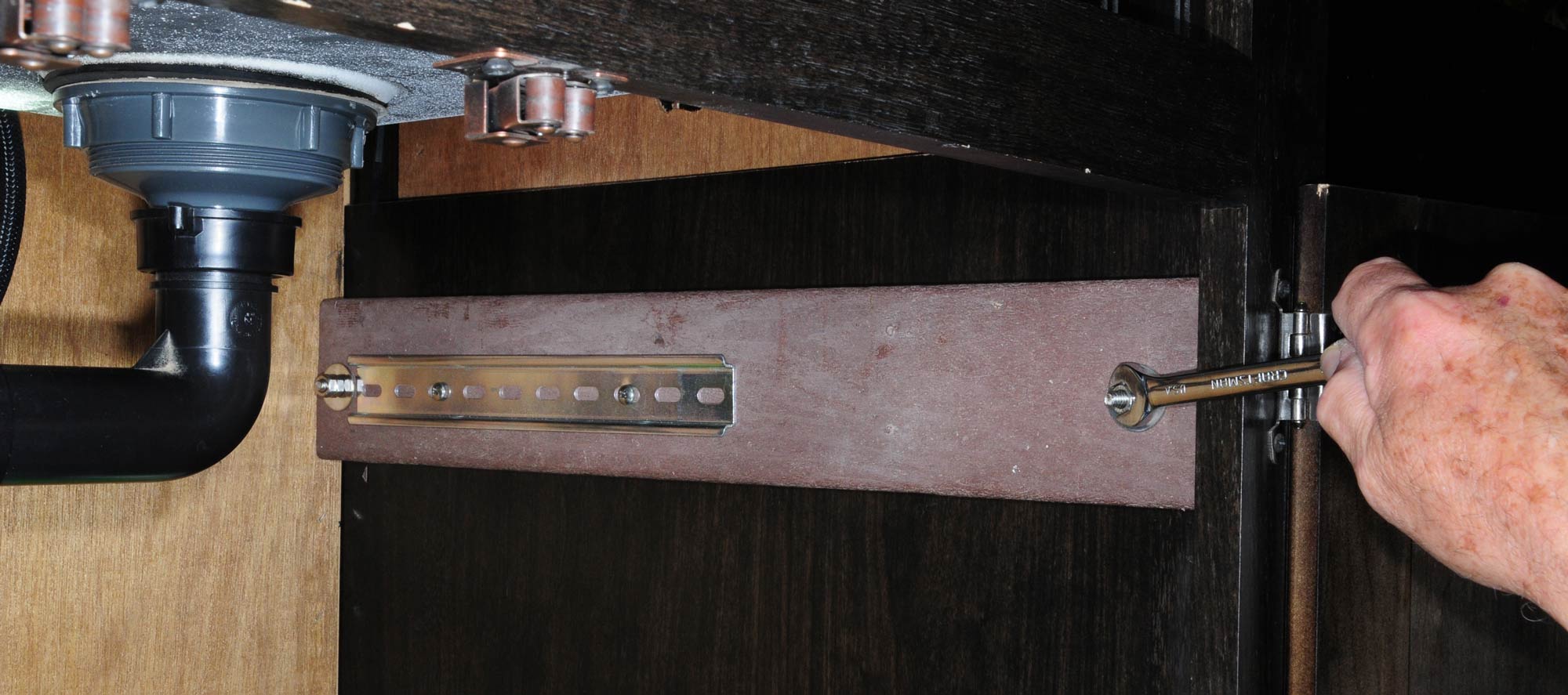
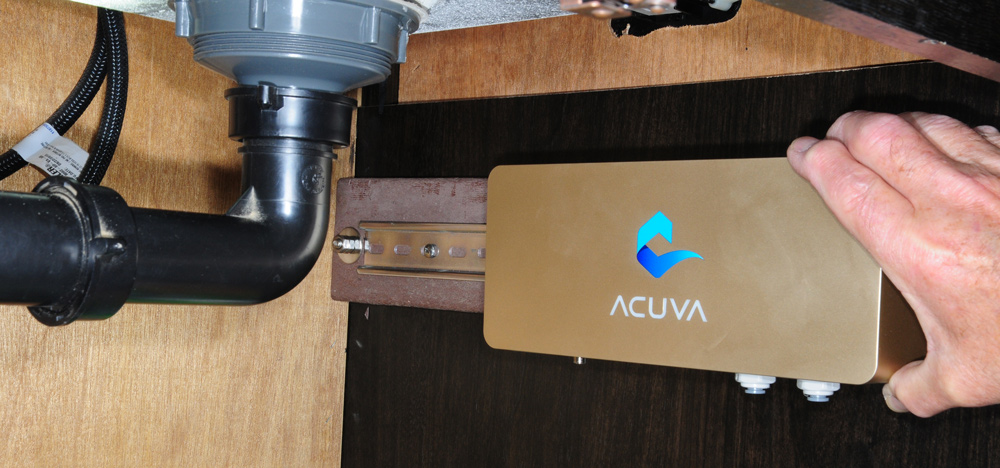
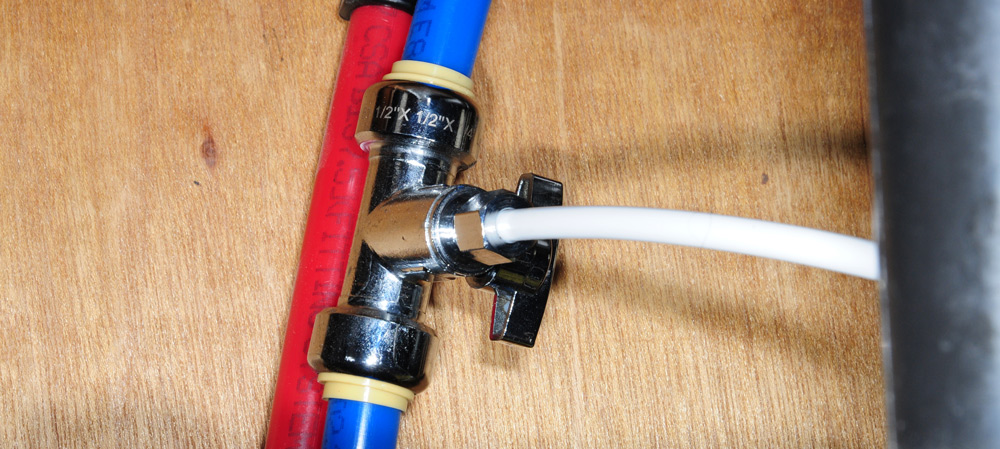
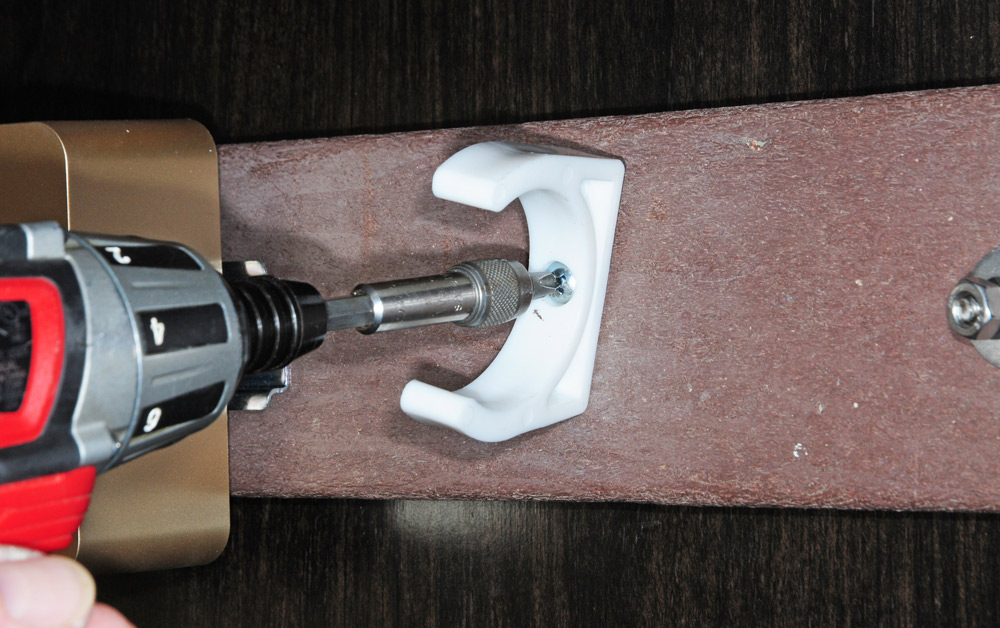
Best of Both Worlds
With all this in mind, it makes sense to use both a high-quality filtration and water purification system. Installing most water filter setups is as simple as mounting the cannisters and connecting a hose to the inlet of the filter (or filters), but what about a purification system? A company called Acuva Technologies Inc. recently introduced its ArrowMAX 2.0 UV-LED Water Purifier with Smart Faucet that seems to meet both demands.
Founded in 2014, Acuva Technologies designs, develops and manufactures advanced UV-LED systems for water, air and surface disinfection applications around the world. The company offers products for both OEM (manufacturer) applications as well as purification systems for boats and RVs — but the ArrowMAX 2.0 system was of particular interest to us because at $549 USD, its cost was roughly one third that of its high-end Arrow 5 product, but with better performance than its entry-level NX-Silver system.
“The flow rate is the true differentiator here,” said Romina Puno, marketing manager for Acuva Technologies. “The Arrow 5 is actually an evolved version of our original UV-LED system design, which was originally intended for marine applications with its rugged aluminum enclosure and stainless-steel interior parts. Inside the Arrow 5 are more high-intensity UVC-LED lights that leverage our patented IntenseBeam technology. As water passes through the Arrow 5 in a serpentine pattern, it is exposed to multiple beams of focused UV energy to deliver the required disinfection at a 5-liter-per-minute flow rate.” Puno noted that the Arrow 5 may still be the best solution for RVers that want to treat more than one tap, or a tap and an icemaker, for example.
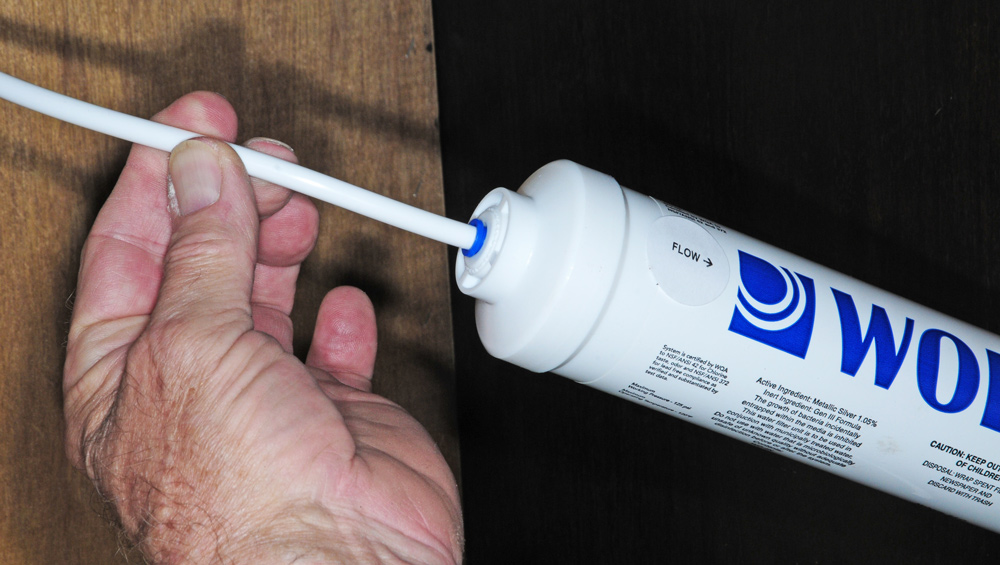
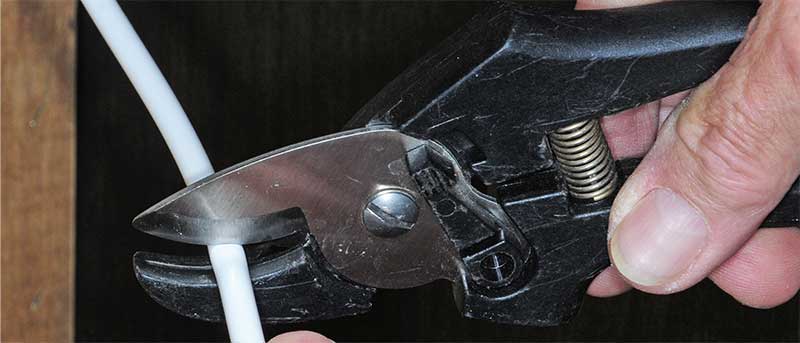
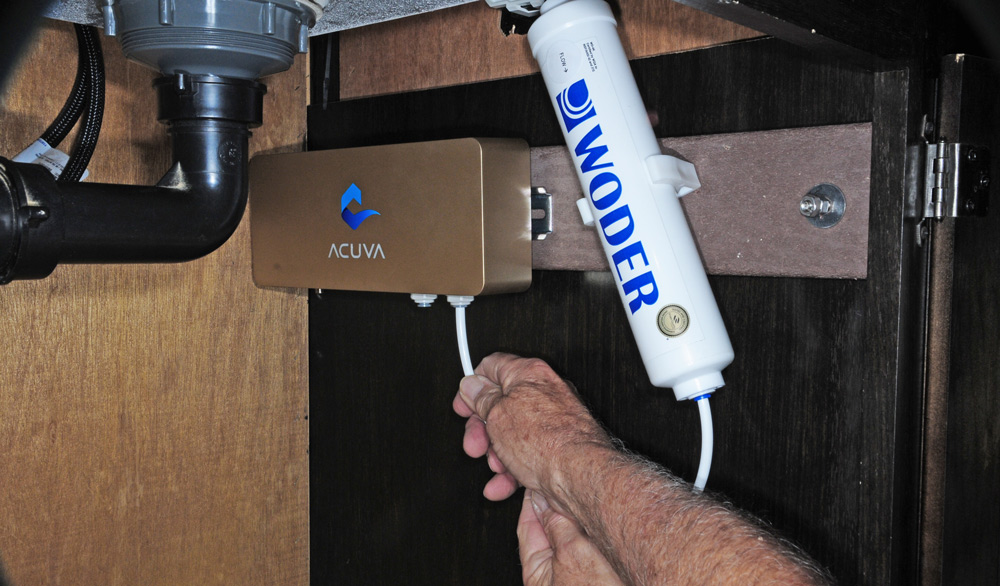
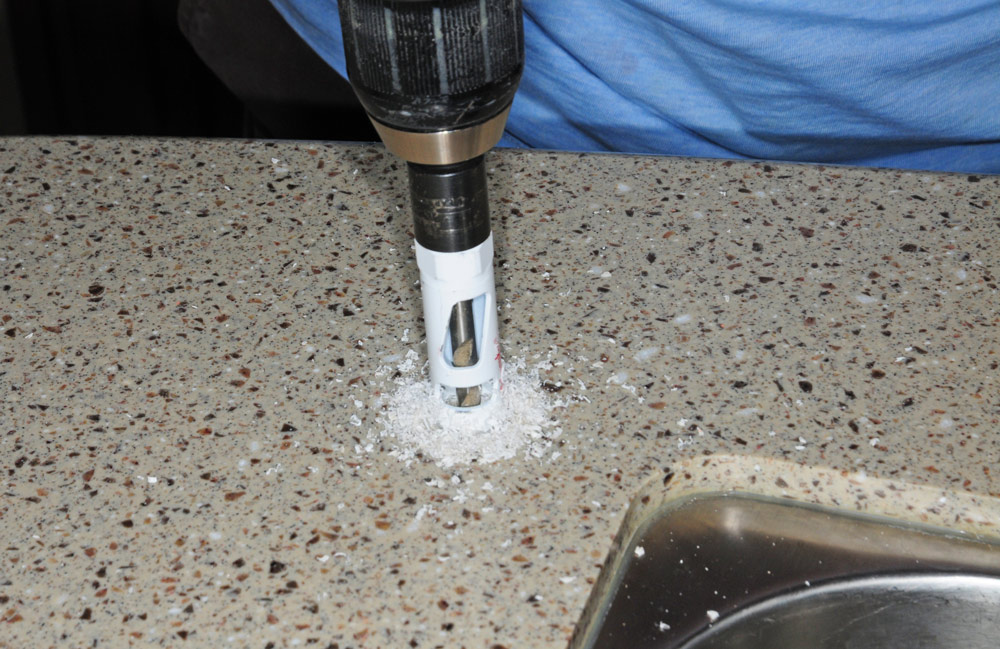
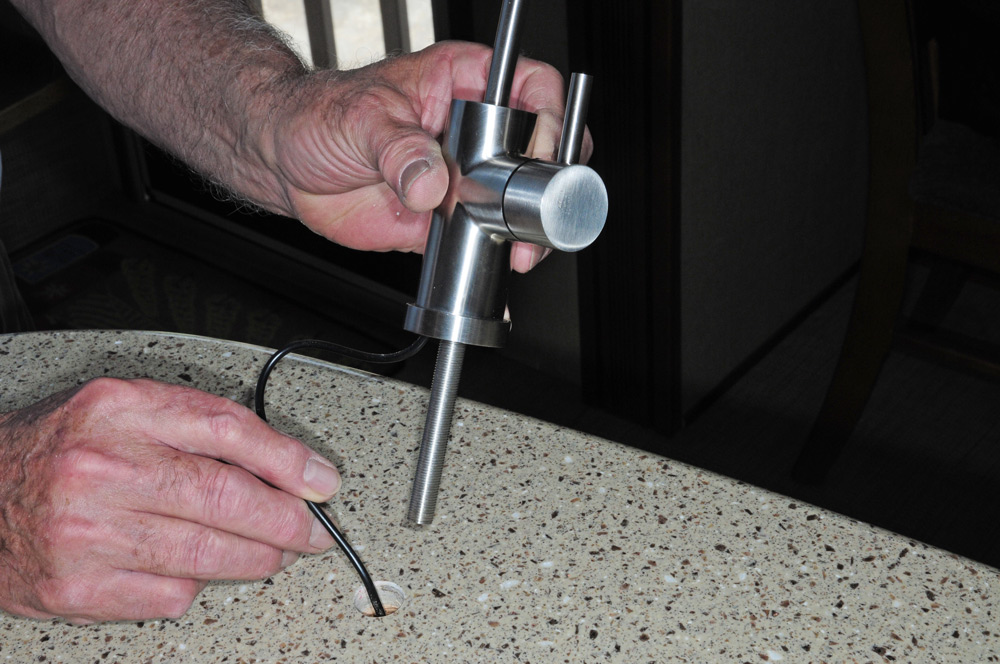
For smaller RVs, or those with only one source from which drinking water would be pulled, the ArrowMAX 2.0 would seem to fill a void in the RV market. “We definitely received feedback for a more compact and lower-cost system,” said Puno. “When we released our first Arrow system in 2016, UVC-LEDs were a very new and expensive technology. In recent years, they have come down in price and have become more powerful. This means we are now able to deliver higher levels of disinfection with fewer UVC-LEDs. This ultimately means more powerful and compact UV-LED water disinfection system designs.”
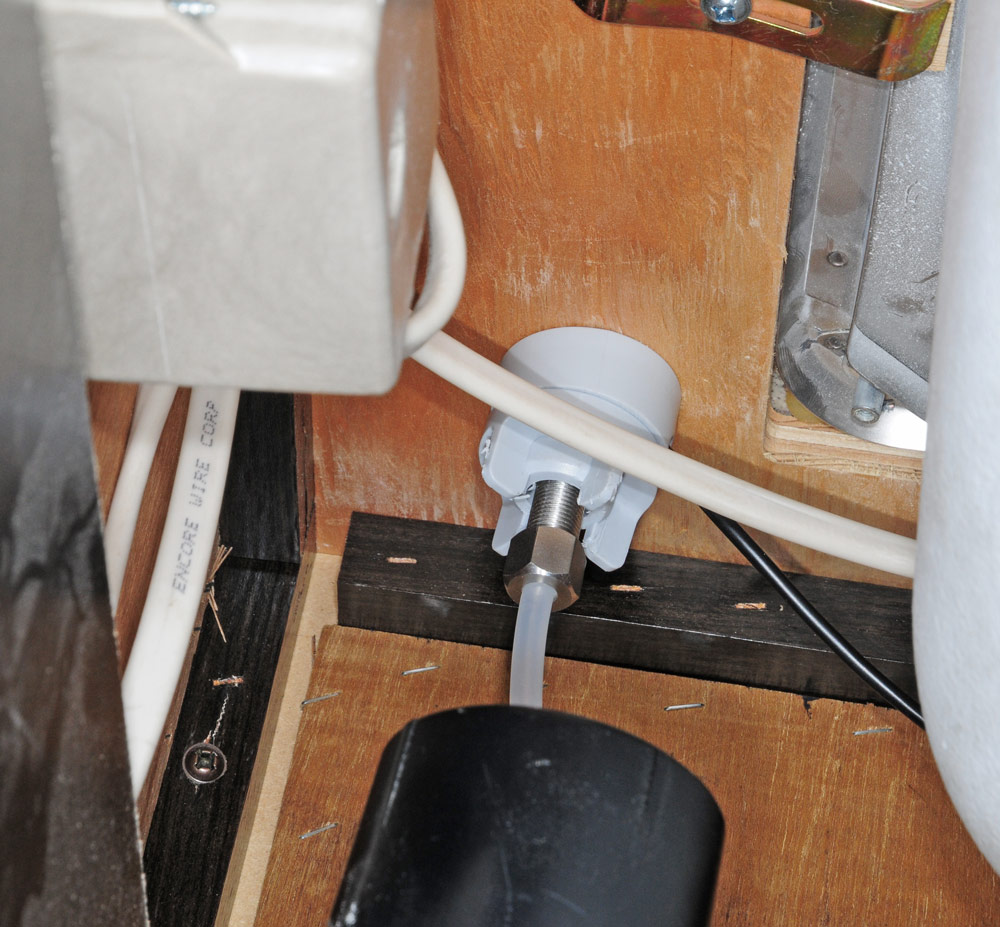

Also included is a composite inline 5-micron prefilter, which is useful if you don’t already have a filter system where the water supply enters the RV (or even if you do). The standard filter provided is said to be good for approximately 2,000 gallons and removes chlorine and organic molecules while improving odor and taste. An advanced 5-micron prefilter (a $50 upcharge) is also available, which according to Acuva can filter 5,000 gallons and removes lead, heavy metals, 99% of chorine, chromium-6, mercury and other contaminants, as well as turbidity (cloudiness), unpleasant odor and taste. The kit also includes mounting hardware, necessary plumbing and a power supply for connecting to 120-volt AC service, or it can be hard-wired to a 12-volt DC source.
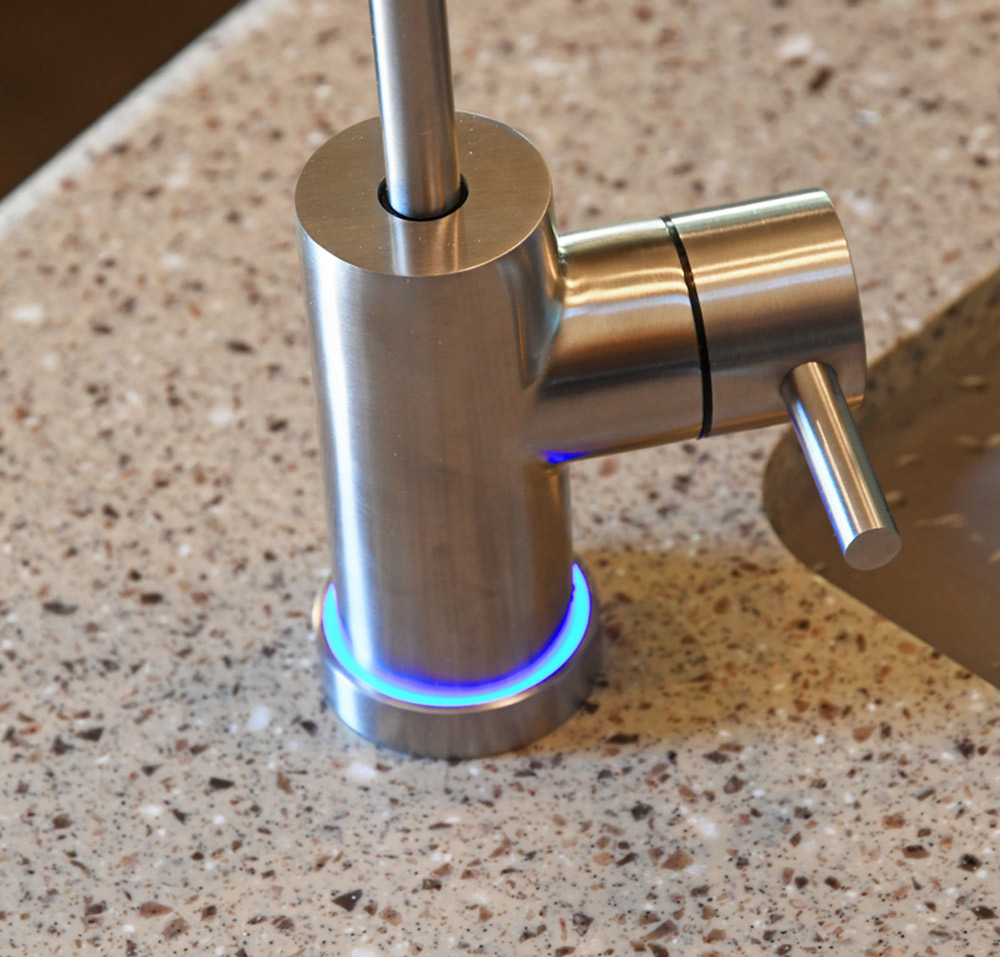
With a good filtration and purification system onboard your RV, you’ll have one less thing to worry about as you travel to new destinations.
Acuva Technologies, Inc.
(800) 980-8810
acuvatech.com
No Dirty Earth LLC
(574) 383-9277
nodirtyearth.com
Already a Subscriber? Click here for Access to the Full Issues.

